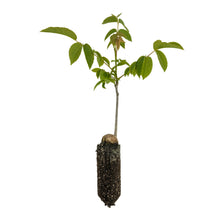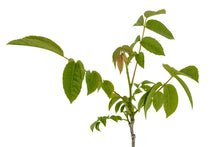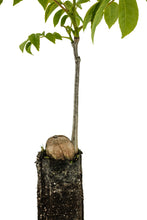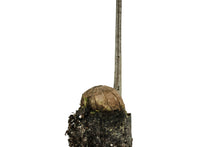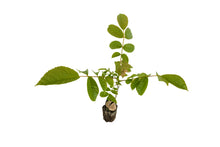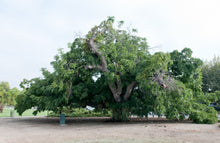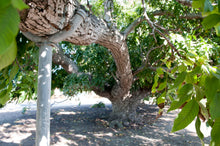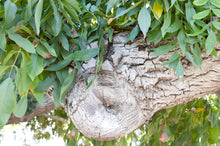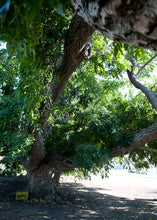
Juglans hindsii × J. regia
- A vigorous and disease-resistant hybrid used widely in the walnut industry, formally named and described by pioneering horticulturalist Luther Burbank
- 100% guaranteed
- Seed-grown on California's Redwood Coast
- Transplanting and care instructions included
 |
Moisture Medium |
 |
Cold Hardiness -10°F |
 |
Light Full Sun |
 |
Size 40 – 60' tall / 30 – 50' spread |
 |
Lifespan 200 yrs |
 |
Growth Rate Fast Growing |
 |
Drought Tolerance High |
 |
Wind Resistance Medium |
About Paradox Walnut
From the International Dendrology Society:
"Paradox Walnuts are hybrids between Juglans hindsii and J. regia, although the term is sometimes used loosely in North America to include hybrids between J. regia and other black walnut species. They are intermediate in leaf form and bark colour between the parents, are somewhat variable and cannot all be distinguished with certainty from other regia–black walnut hybrids except by molecular means. Typically they might have (7–)11–15 leaflets, with squarish, thick-shelled, weakly grooved nuts.
These very vigorous hybrids tend to give low nut yields, but produce fine timber. They are planted quite widely in California and sometimes further north on the Pacific seaboard as shade trees, where vigour is an advantage and nuts are considered messy. However, their greatest value is as rootstocks for grafted J. regia in the Californian walnut industry, thanks to their vigour and disease resistance.
Paradox hybrids have originated in two ways. Wild J. hindsii growing close to Common Walnut orchards will produce hybrid seedlings. Secondly, Californian plant breeder Luther Burbank made the cross deliberately in the latter part of the 19th century, first recording hybrids in 1878 and naming them ‘Paradox’ in 1893. Burbank was offering seedlings in his 1898 catalogue, noting that they showed a lot of variation. The name has never referred to a single clone and is now effectively a grex name. There is some confusion in the older literature over whether Burbank used J. hindsii or J. californica as a parent. This is easily resolved: J. hindsii was not recognised as distinct from J. californica at that time, so Burbank used the latter name, but all contemporary evidence agrees that the trees were Northern California Walnut.
Paradox Walnut can quickly make an impressive, broad crowned tree. Jacobson (1996) mentions a specimen in Whittier, California, which had a spread of about 30 m and girth of 4 m at only 62 years old. A tree of similar size in the suburbs of Portland, Oregon, was defended by local residents when threatened by a housing development in 2014."
About Jonsteen's Seedlings
All of our trees are seed-grown at our nursery on California's Redwood Coast, which is inspected monthly and licensed by the California Department of Agriculture. Trees can provide a natural barrier against high winds, temperatures, noise pollution and soil erosion, all while benefiting local air quality, wildlife and property values — a Jonsteen seedling will only grow in value and beauty!
About Jonsteen's 100% Guarantee
All of our trees are guaranteed to arrive healthy and in good condition. If your tree perishes despite your honest efforts, we will be happy to replace it with a small-sized seedling for just the cost of shipping/handling. You can learn more about our guarantee and tree replacement policy here.
Seedling Size Chart: Medium
Due to the dynamic nature of actively growing trees, as well as the tremendous variation between species’ growth rates, we rely on the cubic volume of a seedling’s root mass to determine its “size” (Small / Medium / Large / XL). Within each size there is minor variance — the dimensions provided here represent the category minimum. If exact measurements are essential, please contact us about current stock.










